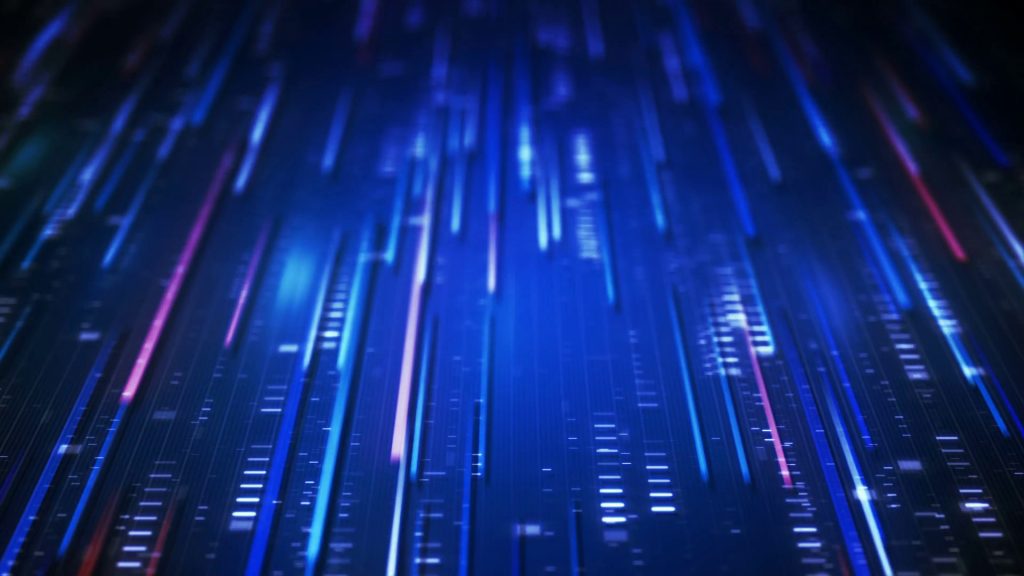… [Trackback]
[…] Information on that Topic: blog.neterra.cloud/en/the-osi-model-and-its-7-layers/ […]

We have made reference to the OSI model many times on this blog, but we haven’t spent enough time to go deep into this topic. What is the OSI model and why is it important when we talk about applications, protocols, and hardware?
The OSI model (Open System Interconnection) is a framework of 7 categories (layers) that shows how applications connect through a network, from one point to another. The main purpose of the model is to clarify the relationships based on networking functionality. In this model, the lower levels serve for the higher. The 7 layers help hardware vendors and developers create better products that communicate more easily.
Not everybody applies the model 100%. It is rather a guideline for easier implementation than a strict law.
The 7 layers of the OSI model are:
This is the layer where the user communicates with the application or network. You interact with this layer every time you use an app or a web browser. Your click gets registered and it passes the info through the model.
Examples: browsers, FTP, HTTP, SNMP
This layer is a kind of a translator. It converts the data from the Application Layer into a network format (or the other way around) and sends it along the way. An example of this is encryption and also decryption of data for ensured transmissions.
Examples: MPEG, JPEG, GIF, MIDI
The Session Layer manages the communication between applications. It sets it up, administrates it and eventually terminates it.
Examples: SQL, NFS, RPC
This layer is responsible for the transfer of information. It coordinates the data transfer flow between hosts and end systems. It needs to know how much data to send, at what speed, where the information should go and more.
Examples: UDP, TCP
The level responsible for router functionality. The key characteristics here include routing, managing connected devices and generally moving data.
Examples: IP, DDP, IPX
It facilitates the direct data transfer between two nodes and manages errors from the Physical Layer. It is divided into two parts– MAC (Media Access Control) and LLC (Link Control).
Examples: IEEE 802.3/802.2, PPP, FDDI
Here we are getting physical, we are talking about electrical impulses, lights, radio waves, etc. It is the hardware side of transferring data.
Examples: Ethernet cable, USB, Optical cable
The OSI model is useful because it helps you understand and see, at least in your head, how applications communicate.
… [Trackback]
[…] Information on that Topic: blog.neterra.cloud/en/the-osi-model-and-its-7-layers/ […]
… [Trackback]
[…] Information on that Topic: blog.neterra.cloud/en/the-osi-model-and-its-7-layers/ […]
… [Trackback]
[…] Here you will find 87146 additional Info to that Topic: blog.neterra.cloud/en/the-osi-model-and-its-7-layers/ […]
… [Trackback]
[…] Read More Info here on that Topic: blog.neterra.cloud/en/the-osi-model-and-its-7-layers/ […]
… [Trackback]
[…] Read More Information here on that Topic: blog.neterra.cloud/en/the-osi-model-and-its-7-layers/ […]
… [Trackback]
[…] Info to that Topic: blog.neterra.cloud/en/the-osi-model-and-its-7-layers/ […]
… [Trackback]
[…] Info to that Topic: blog.neterra.cloud/en/the-osi-model-and-its-7-layers/ […]
… [Trackback]
[…] Read More on that Topic: blog.neterra.cloud/en/the-osi-model-and-its-7-layers/ […]
… [Trackback]
[…] Read More to that Topic: blog.neterra.cloud/en/the-osi-model-and-its-7-layers/ […]
… [Trackback]
[…] Find More here to that Topic: blog.neterra.cloud/en/the-osi-model-and-its-7-layers/ […]
… [Trackback]
[…] Info on that Topic: blog.neterra.cloud/en/the-osi-model-and-its-7-layers/ […]
… [Trackback]
[…] Information on that Topic: blog.neterra.cloud/en/the-osi-model-and-its-7-layers/ […]
… [Trackback]
[…] Find More on to that Topic: blog.neterra.cloud/en/the-osi-model-and-its-7-layers/ […]
… [Trackback]
[…] Info on that Topic: blog.neterra.cloud/en/the-osi-model-and-its-7-layers/ […]
… [Trackback]
[…] Find More Info here to that Topic: blog.neterra.cloud/en/the-osi-model-and-its-7-layers/ […]
… [Trackback]
[…] There you will find 91242 additional Information on that Topic: blog.neterra.cloud/en/the-osi-model-and-its-7-layers/ […]
… [Trackback]
[…] Read More Info here to that Topic: blog.neterra.cloud/en/the-osi-model-and-its-7-layers/ […]
… [Trackback]
[…] Find More on that Topic: blog.neterra.cloud/en/the-osi-model-and-its-7-layers/ […]
… [Trackback]
[…] Read More on that Topic: blog.neterra.cloud/en/the-osi-model-and-its-7-layers/ […]
… [Trackback]
[…] Find More to that Topic: blog.neterra.cloud/en/the-osi-model-and-its-7-layers/ […]
… [Trackback]
[…] Read More to that Topic: blog.neterra.cloud/en/the-osi-model-and-its-7-layers/ […]
… [Trackback]
[…] Find More Info here to that Topic: blog.neterra.cloud/en/the-osi-model-and-its-7-layers/ […]